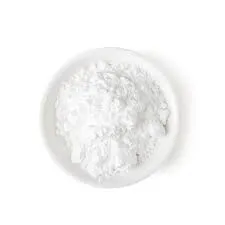Understanding Sulfamic Acid Properties, Applications, and Safety
Sulfamic acid, also known as sulfamide, is an inorganic compound with the formula H₃NSO₃. It is a white crystalline solid that is highly soluble in water, making it a versatile substance used across various industries. With its unique chemical structure, sulfamic acid presents a range of properties that contribute to its widespread applications.
Chemical Properties
Sulfamic acid is a sulfonic acid derivative where the sulfonyl group (–SO₂) is bonded to an amino group (–NH₂). This gives sulfamic acid its acidic characteristics, with a pKa value around 1.0, indicating it can dissociate to release protons in solution, behaving similarly to other strong acids. This property makes sulfamic acid a good candidate for a variety of chemical reactions.
One of the noteworthy features of sulfamic acid is its stability; it does not decompose at high temperatures, allowing it to be used in applications involving heat. This stability, combined with its effective acid characteristics, makes it useful in both industrial and laboratory settings.
Applications
1. Descaling Agent One of the most common uses of sulfamic acid is as a descaling agent in various cleaning products. It effectively removes limescale and mineral deposits from equipment, boilers, and pipes. Its ability to dissolve metals and mineral deposits safely makes it an essential ingredient in many household and industrial cleaners.
2. pH Regulator Due to its strong acid nature, sulfamic acid is utilized as a pH adjusting agent in various formulations, ensuring optimal conditions in numerous chemical processes.
sulfamate acid

3. Chemical Synthesis In organic chemistry, sulfamic acid serves as a source of the sulfamate group for sulfamoylation reactions. This allows for the introduction of nitrogen-containing functional groups into organic molecules, expanding the toolbox for synthetic chemists.
4. Agriculture It is also used in the agricultural sector as a herbicide and pesticide due to its ability to affect plant growth. Its mode of action involves disrupting various physiological processes in plants, which can be harnessed to control unwanted vegetation.
5. Food Industry Sulfamic acid finds application in food processing, specifically as a food additive and a preservative. It can help maintain the acidity and flavor of certain food products.
Safety and Environment
While sulfamic acid is useful, it is essential to handle it with care. It can cause skin and eye irritation upon contact, and therefore, appropriate personal protective equipment (PPE) should be worn when handling. Inhalation of its dust can cause respiratory irritation, necessitating the use of respirators in workplaces where aerosols may be generated.
Environmental considerations are also paramount. While sulfamic acid is generally regarded as less harmful to the environment compared to stronger acids, proper disposal practices must be followed. It should not be released into the water systems as it can contribute to acidity levels that harm aquatic life.
Conclusion
In summary, sulfamic acid is a multifaceted compound with significant industrial importance. Its properties enable its use as a descaling agent, pH regulator, and in chemical synthesis, among other applications. However, proper handling and safety protocols are crucial to ensure that its use does not pose risks to health and the environment. As industries continue to explore innovative applications for sulfamic acid, understanding its properties and implementing best practices will remain essential for maximizing its benefits while mitigating potential hazards.

